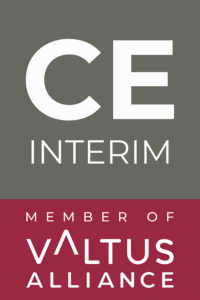Ever wonder why some companies break into new markets effortlessly, while others stall despite having great products?
The answer lies in the strength of their market entry strategy.
A successful market entry doesn’t happen by accident. It demands more than enthusiasm and capital—it takes cultural insight, local alignment, and operational control.
In this guide, we break down 5 proven strategies that drive global market entry success, especially in complex regions like the Middle East and Central and Eastern Europe (CEE). Whether you’re expanding organically or through acquisition, these principles apply.
1. Conduct In-Depth Market Research & Feasibility Analysis
Before setting foot in a new region, know where you’re stepping.
I. Understand Customer Needs and Competition
Deep customer insight is non-negotiable. What works in your home market may fall flat abroad. Study buyer preferences, cultural nuances, and purchasing behavior.
Equally important: size up your competition. Who are the local leaders? What gaps can you fill?
Tip: In CEE, some markets are highly fragmented, giving first movers an edge. In the Middle East, pricing models and payment systems vary dramatically across borders.
II. Assess Regulatory and Economic Environment
Regulations can make or break your plan. Check:
- Legal requirements for foreign companies
- Tax structures
- Labor laws
- Sector-specific compliance
In emerging markets, incentives may be available (especially in UAE free zones or Eastern EU countries). But they often come with bureaucracy.
Stat: “Many businesses underestimate the degree of competition and regulation in new markets. If you don’t see how you would be different, it’s better not to go.” —BDC.ca
2. Adapt Your Product and Strategy to the Local Market
Localization isn’t just translation. It’s transformation.
I. Cultural and Language Localization
From packaging to user interfaces, small changes can dramatically impact acceptance. In the Middle East, brand messaging often requires deeper alignment with cultural values—and yes, sometimes even layout or store design (e.g., family sections in cafes).
Example: McDonald’s menus in the GCC region feature halal options and local favorites like McArabia.
II. Tailoring Offerings to Local Preferences
Your current value proposition might not resonate. Adjust pricing, service levels, or delivery models.
In CEE, affordability often drives success. In the UAE, luxury and premium positioning could be the winning edge.
Case Example – Tesco’s Localized Approach in CEE
Tesco entered Hungary and Poland by adapting to local tastes and stocking regionally popular goods. This move built early loyalty and set them apart from global competitors who assumed a one-size-fits-all model.
3. Build Strategic Partnerships and Networks
No one succeeds alone in unfamiliar territory.
I. Leverage Local Partners for Market Access
Local distributors, franchise models, or advisory alliances help navigate:
- Legal requirements
- Supply chains
- Customer acquisition
They also build credibility.
Example: Starbucks partners with Alshaya in the Middle East—leveraging the local giant’s real estate, cultural understanding, and operational network.
II. Example – Amazon’s Acquisition of Souq (Middle East)
Instead of building from scratch, Amazon bought Souq.com to instantly enter the Middle East e-commerce market. This gave them 50M users overnight—and an ecosystem already adapted to local payment habits and logistics challenges.
III. Alliances and Joint Ventures
Marriott used a joint venture with Alibaba to enter China’s hospitality sector. Why? Alibaba knew the tech, customers, and behavior. Marriott knew hospitality. Together, they entered faster with less risk.
In regions like CEE, JV models also offer risk-sharing and faster onboarding with fewer upfront costs.
4. Start Small, Stay Flexible, and Scale Up
Big wins often start with small bets.
I. Pilot Projects & “Test and Learn”
Launching in one city or segment allows you to learn fast, adapt, and optimize before scaling. It lowers investment risk and reveals unexpected blockers.
Example: Uber pilots new cities with limited availability before scaling—a proven way to test both demand and operational kinks.
II. Adjusting Strategy On-the-Fly
Markets shift. Your assumptions may not hold. Flexibility is your friend. Stay responsive to:
- Early customer feedback
- Local regulation changes
- Shifting cost structures
III. Risk Management and Resource Planning
Plan for:
- Gradual capital deployment
- Scenario-based budgeting
- Backup supply chain and HR plans
Think like a startup inside your global company.
5. Secure Strong Leadership and Expertise (Interim Solutions Can Help)
Execution makes or breaks expansion.
I. Cross-Cultural Interim Management
An Interim Market Entry Manager can guide the first 6–12 months, laying down processes, hiring locals, and setting the tone.
CE Interim provides vetted interim leaders who know your target region—from Dubai to Bucharest—and can hit the ground running.
They bring operational control and speed, without long-term commitment.
II. Example – Renault’s CEE Success with Local Insight
When Renault acquired Romania’s Dacia, it adapted offerings to local needs—affordable models with regional appeal. They backed this with experienced local leadership who understood how to relaunch the brand.
The result? CEE dominance and eventual expansion into global markets.
III. Building a Local Team
Your expansion won’t work without buy-in from locals.
Recruit culturally aligned leadership or onboard interim specialists. They translate global strategy into local execution—from legal setup to sales enablement.
Regional Spotlight: Middle East and CEE Considerations
I. Middle East – Cultural Nuances and Growth Potential
With a USD 3.7 trillion project pipeline (84% in GCC), the Middle East is booming. But it’s a relationship-first region. Decision-making can be opaque, and local connections (Wasta) often matter more than pricing.
Understanding Islamic business etiquette, family business structures, and local hiring expectations is key.
II. CEE – Diverse Markets and EU Integration
CEE markets like Poland and Romania boast 3–4% GDP growth, higher than Western Europe. They offer EU alignment with lower costs and vast consumer bases.
But they’re not monolithic. Language, consumer behavior, and regulatory nuances vary country to country. Local knowledge is essential.
Conclusion – Charting a Successful Market Entry
There’s no silver bullet for entering a new market.
But by:
- Researching thoroughly,
- Localizing your strategy,
- Partnering wisely,
- Piloting carefully, and
- Hiring the right leadership…
…you dramatically increase your chances of a successful market entry.
Leverage Interim Support
Need extra help?
Successfully entering a new market is complex—but you don’t have to go it alone.
CE Interim provides interim executives with regional expertise in Middle East and CEE markets. From market analysis to post-entry execution, we help firms navigate expansion efficiently and effectively.
→ Contact us to discover how interim leaders can unlock your global growth.
CE Interim | Market Entry. Made Possible.





